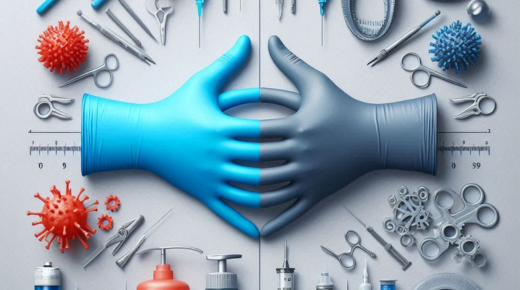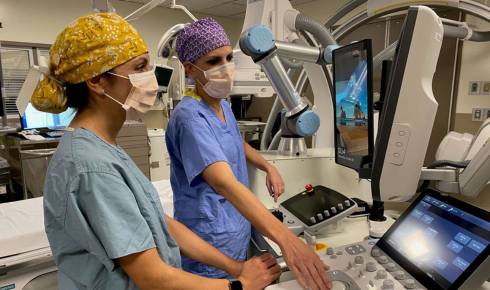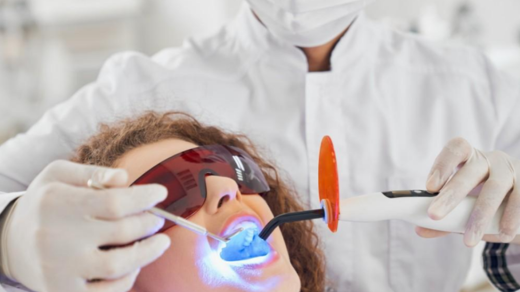When it comes to disposable nitrile gloves, not all gloves are created equal. If you’ve ever shopped around, you’ve probably come across the terms medical grade and industrial grade—but what do they actually mean? Are they just marketing buzzwords, or do they reflect real differences in quality, safety, and performance?
This in-depth guide will walk you through the critical differences between these two types of nitrile gloves, how they’re made and tested, who uses them, and where most of them are manufactured. Whether you’re sourcing gloves for a hospital, a lab, an auto shop, or a food processing facility, this breakdown will help you make an informed decision.
What Are Nitrile Gloves?
Nitrile is a synthetic rubber created by combining acrylonitrile and butadiene. Developed as a durable, allergy-safe alternative to latex, nitrile has become the gold standard for disposable gloves in a wide range of industries.
Why are nitrile gloves so widely used?
- Latex-free: They don’t trigger latex allergies.
- Puncture-resistant: Especially compared to vinyl or latex.
- Chemical-resistant: Excellent protection from oils, grease, solvents, and many chemicals.
- Flexible and comfortable: Modern nitrile gloves are soft, stretchy, and suitable for extended wear.
What Are Medical Grade Nitrile Gloves?
Medical grade nitrile gloves, also referred to as exam gloves, are engineered and tested specifically for use in healthcare environments. They are designed to serve as a reliable barrier against bloodborne pathogens, viruses, and other contaminants that healthcare workers encounter daily.
What Sets Medical Gloves Apart?
- FDA Regulation (U.S. Market)
Medical-grade gloves must comply with U.S. Food and Drug Administration (FDA) standards under 21 CFR 880.6250. They’re considered a Class I medical device unless marketed for surgical use, in which case they become Class II and require additional regulatory hurdles. - Testing to ASTM D6319
These gloves must meet the ASTM D6319 standard, which includes rigorous testing for:- Tensile strength
- Elongation
- Dimensional stability
- Barrier integrity (via water leak testing)
- AQL of 1.5 or Lower
AQL stands for Acceptable Quality Limit, which reflects the percentage of gloves in a batch that can have defects. Medical-grade gloves require an AQL of 1.5 or better, which ensures low failure rates. - Powder-Free Requirement
Powdered medical gloves are banned in the U.S. due to the risk of allergic reactions and complications. Medical-grade nitrile gloves are always powder-free. - Sterile and Non-Sterile Options
Exam gloves used for standard patient contact are typically non-sterile, while surgical gloves are sterile and come in precise sizes for a snug fit.
What Are Industrial Grade Nitrile Gloves?
Industrial grade nitrile gloves are made for heavy-duty tasks that require protection from harsh substances, but not necessarily biological contaminants. They’re designed to hold up under rough conditions but aren’t tested to the same standards required for medical use.
What Makes a Glove Industrial Grade?
- No FDA Clearance Needed
Since these gloves aren’t used in direct patient care, they don’t require FDA approval. - AQL Standards Are More Flexible
Industrial gloves often have an AQL between 2.5 and 4.0. This means they might be more prone to minor defects, which is acceptable in non-medical settings. - Thicker Designs for Tough Jobs
Industrial gloves often have a thicker mil rating—ranging from 5 to 8 mils or more—for added durability and chemical resistance. - Greater Variety in Colors and Textures
These gloves are available in black, orange, green, blue, and more. Black nitrile gloves are especially popular in auto shops and tattoo studios because they hide grease, ink, and dirt. - Textured Finishes for Grip
Industrial gloves often feature raised textures to improve grip, especially in wet or oily conditions.
Key Differences Between Medical and Industrial Nitrile Gloves
Understanding the distinction between these two glove types can help you choose the right product for your industry. Here’s how they stack up across several important categories.
Regulatory Oversight
- Medical grade: Regulated and cleared by the FDA. Subject to strict testing for safety and barrier protection.
- Industrial grade: Not subject to FDA oversight. Tested for durability but not required to meet pathogen protection standards.
Barrier Protection
- Medical grade: Offers proven protection against viruses, bacteria, and bloodborne pathogens.
- Industrial grade: Suitable for chemical exposure, oils, and rough handling—but not certified for biohazard safety.
Quality Control (AQL)
- Medical grade: Must meet AQL 1.5, allowing very few defects.
- Industrial grade: May have a higher AQL (typically around 2.5–4.0), which is acceptable for mechanical or janitorial use.
Use Cases
- Medical grade: Healthcare, dental, labs, first responders, cleanrooms, pharmaceutical handling.
- Industrial grade: Automotive, janitorial, construction, plumbing, food service, tattoo and salon services.
Pricing
- Medical grade: Higher due to rigorous testing, certification, and liability.
- Industrial grade: More economical, especially in high-usage environments where FDA clearance isn’t needed.
What Is AQL and Why Should You Care?
AQL (Acceptable Quality Limit) is one of the most important metrics in disposable glove quality control, though many buyers aren’t familiar with it.
AQL refers to the highest number of defective gloves (like those with pinholes or weak seams) allowed in a manufacturing batch.
- AQL 1.5: Required for medical applications. This means only 1.5 gloves per 100 tested are allowed to be defective.
- AQL 2.5+: Acceptable for industrial gloves, which don’t require pathogen-level protection.
While a slightly higher AQL might not matter if you’re changing oil or scrubbing a toilet, it makes a huge difference if you’re drawing blood or performing surgery.
Where Are Nitrile Gloves Manufactured?
Nitrile gloves are produced all over the world, but most of the world’s supply comes from Asia, where glove production has become highly specialized. Countries with robust nitrile glove manufacturing industries have invested heavily in automation, dipping lines, and raw material sourcing.
1. Malaysia
Malaysia is the global leader in disposable glove manufacturing, producing billions of gloves each year. Many of the world’s most trusted glove factories are located here, and the country’s infrastructure is built around glove production. Most facilities are FDA-registered and meet international ISO and ASTM standards.
2. Thailand
Thailand has a long history of latex production and has evolved into a strong player in nitrile glove manufacturing as well. The gloves from Thailand often have a “softer” nitrile feel and are used in both medical and industrial applications.
3. Indonesia
Indonesia is an up-and-coming star in the nitrile glove industry. Factories here produce high volumes of gloves for global export and are increasingly competitive in both medical and industrial sectors. Many buyers choose Indonesian production for private labeling programs or container-direct pricing.
4. Vietnam
Vietnam is gaining traction, especially in producing industrial-grade gloves. While it doesn’t have the same scale as Malaysia or Indonesia, it offers newer facilities and competitive pricing.
5. China
While China does produce nitrile gloves, U.S. buyers currently face steep tariffs—as high as 195% on nitrile and 145% on vinyl gloves as of 2025. This makes gloves manufactured in China far more expensive than comparable options from Southeast Asia.
How to Choose Between Medical and Industrial Gloves
The best glove for your business depends entirely on your industry, application, and risk exposure.
Choose Medical Grade If You:
- Work in a medical, dental, or laboratory environment
- Handle blood, bodily fluids, or infectious materials
- Need FDA-cleared products for compliance or licensing
- Prioritize low AQL for peace of mind
- Require exam or surgical-level protection
Choose Industrial Grade If You:
- Work in a trade or service industry
- Handle solvents, oils, or abrasive materials
- Need chemical resistance and grip
- Require thicker gloves for heavy-duty tasks
- Want cost-effective protection for non-medical use
If your work involves both types of risk (e.g., a first responder handling biohazards and broken glass), consider choosing medical-grade gloves with high tensile strength—or stocking both grades for different tasks.
Color Coding and Glove Thickness
Color is more than just aesthetics when it comes to gloves:
- Blue or purple: Often used for medical or dental use.
- Black: Popular in automotive, tattoo, and industrial settings—hides grease, ink, and dyes.
- Orange or green: High-visibility for mechanics or hazardous material handling.
- White: Typically used in labs, food handling, or cleanrooms.
Thickness, measured in mils (1 mil = 0.001 inches), is another consideration:
- 3-4 mils: Thin for dexterity, often used in medical exams or food service.
- 5-6 mils: Midweight for balanced protection and flexibility.
- 7-8 mils+: Heavy-duty protection for tough, industrial tasks.
Final Thoughts
Understanding the difference between medical-grade and industrial-grade nitrile gloves isn’t just about compliance—it’s about protecting your team, your customers, and your business.
Medical-grade gloves provide top-tier protection from pathogens and meet strict FDA and ASTM requirements. Industrial-grade gloves offer durability and resistance for tough, dirty jobs without the higher cost of medical certification.
Knowing which glove suits your needs—and where it’s manufactured—can help you avoid delays, compliance issues, and unnecessary costs.
Next time you see “medical grade” or “industrial grade” on a label, you’ll know exactly what it means—and why it matters.











